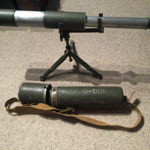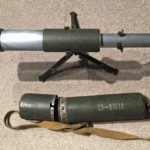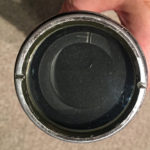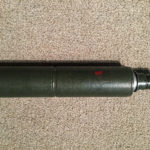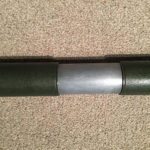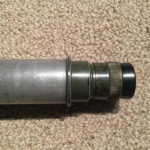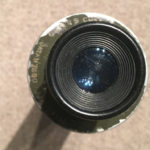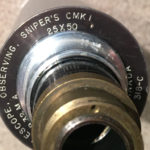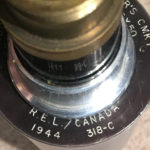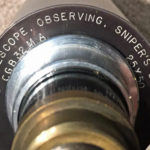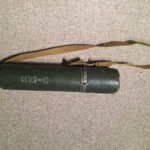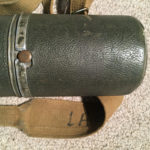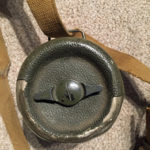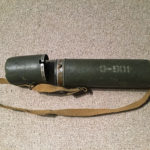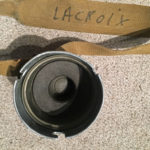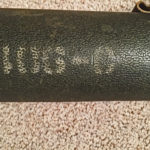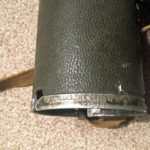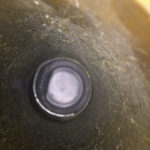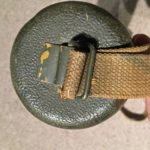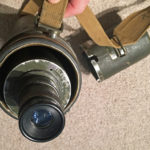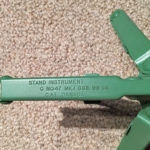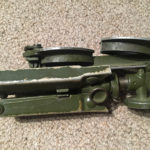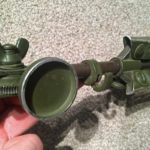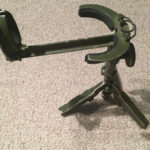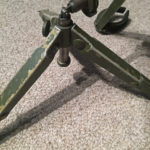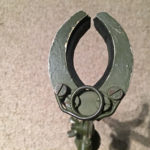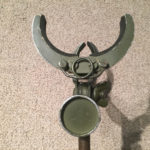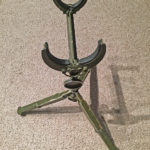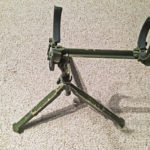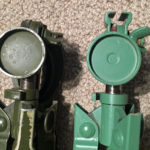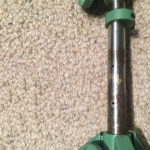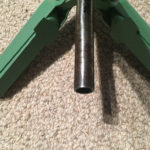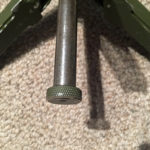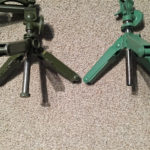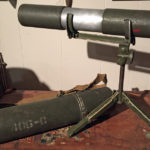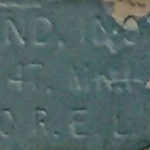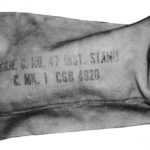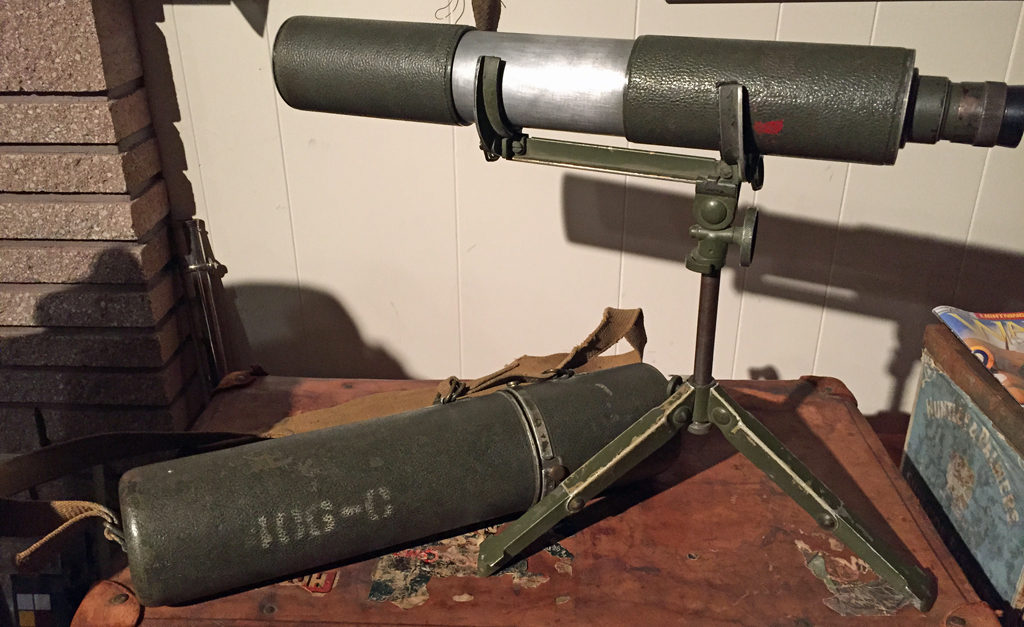
The Telescope, Observing, Sniper’s, C Mark I single draw, 25 Power (25X) was invented and manufactured by Research Enterprises Limited (R.E.L.) in Toronto, Ontario, Canada as a proposed replacement for the classic old British design Scout Regiment Telescope MK. IIs. Just over 500 sets were made in 1944 – 1945. The British advised Canada that they were not interested in the TOS C MK. I as they were going to stop using telescopes for snipers and observers and as a result, lacking a foreign market, R.E.L. ceased production. Sadly, the British reneged on their word and continued to use the old fashioned 3-draw 20 power (20X) Scout Regiment Telescope MK. II until at least the mid-1990s.
The author of this web site owns the following:
- Telescope, Observing, Sniper’s C MK. I SN 403-C
- Stand C No. 47 MK. I SN 411-C
- Case, Carrying CN 483-C
- CASE, C. No. 47 INST. STAND / C. MK. 1 CGB 4920 [I AM LOOKING FOR ONE OF THESE TO COMPLETE MY SET.]
- Stand C No. 47 MK. I no SN and made by C.A.L. rather than R.E.L. circa 1946 (missing cradle) Centre post has no knob at the bottom and will not articulate for very low profile. At the moment this is the only example known. [I am looking for a cradle to complete this stand. The cradle may be by R.E.L. (dark green) or S.A.L. (light green).]
- Telescope (incomplete) 318-C
COMPONENTS
The TOS C MK. I set consists of four components:
- Telescope, Observing, Sniper’s C MK. I – A 25 power (25X) single draw telescope. Short, compact and weather resistant.
- Instrument Stand C No. 47 – A extremely lightweight and compact folding stand (tripod) that was of brilliant design.
- Case – Cylindrical aluminum covered with khaki (green) Vinylite. Neoprene sponge rubber inserts at each end.
- Carrying bag for the stand – The bag is extremely rare, perhaps because the stand fits into the pocket of a Denison smock and thus the bag was unnecessary. The bag was marked “CASE, C. NO. 47 INST. STAND / C. MK. I CGB 4920” The CGB 4920 was the stores part number. “Without Warning” (Second Edition 2014) by Clive Law shows such a bag on page 49. I am looking for one of these canvas bags.
QUANTITY MADE
Official Canadian records in the Library and Archives Canada indicate that 500 TOS C MK. I were made, however several have turned up with serial numbers in the 500s. It was thought that they were made too late to serve overseas in World War II but one set has turned up, reportedly having been given to a Dutch family at the end of the war. Interestingly, although the British refused the TOS C MK. I, a fair number have turned up in the U.K. Whether this was due to military procurement or private and/or club purchases of surplus scopes is not known at this time.
DATES
The scopes observed so far are all dated 1944. The stands are usually dated 1945, and painted a dark army green although one undated one in apparently original lime green paint is in the author’s collection.
SERIAL NUMBERS
The components usually each have a serial number but it seems from observation of surviving examples, that there was little if any attempt to keep numbered sets together and all sets seen so far are mismatched. As a result, collectors should not devalue a set because of mismatched numbers, however if a matched set turned up, then a collector could ask a premium.
SETTING UP
The terminology below is unofficial as no official instructions have been found.
- On the stand, loosen the wing-nut (butterfly-nut) and rotate the cradle about 90 degrees, then tighten the wing-nut.
- Fold the three legs out until they stop.
- Loosen the smaller round tightening knob, extend the centre pole and then tighten the knob again when it is at the height desired. The centre pole has a stopping knurled knob at the bottom.
- Fold out the lower halves on the tripod legs. This might be optional, but it is recommended for stability.
- On the cradle, fold each set of cradle claws 90 degrees until each one is vertical.
- Spread the cradle claws open.
- There is a stop collar on the centre pole. It is loosened by prying the lever away from the centre pole, at which point the collar will slide. Locking it in position is accomplished by pushing the lever in. An observer could thus set it at a predetermined position for quick set-up according to his size and tastes.
- On the case, loosen the wing-nut if necessary to break the seal, then push the lid down slightly and turn counter-clockwise a fraction of an inch to disengage the three “bayonet” style lugs and lift off the lid. The cap is tethered to the case by the carrying strap.
- Carefully remove the telescope to avoid damage. In a combat situation, an observer would be careful not to let the lens reflect light which could give away his position to enemy snipers. Note that the scope goes into the case Objective Lens (big end) first which is the opposite direction for the British Scout Regiment Telescope.
- Extend the sun shade on the Objective Lens end of the scope. This helps to protect the les from dirt and scratches and in combat, helps to prevent the give-away reflection.
- Extend the small end of the scope.
- Lay the scope on the stand’s cradle, balancing the weight, and then push the claw clamps against the scope to secure it.
- Adjust the stand and scope to suit. The scope may now be easily elevated or depressed by using the large knurled knob on the stand. .
- Focus using the knurled ring next to the Bakelite (black “plastic”) eyepiece.
- Putting it away is the reverse of the above.
OTHER R.E.L. SCOPES
Note that R.E.L. made many other optics including binoculars, artillery sights, naval gun sights and telescopes that look a lot like the classic British Scout Regiment Telescope MK. IIs. I do not know if these were ever used by snipers but it is certainly possible. The Quartermaster issuing scopes did not care what model of telescope he was issuing, as long as it did the job.
MYSTERIES
- How many were made? The official records say only 500 but serial numbers of some surviving examples are over 500.
- Did production continue post-WWII? I have one stand (missing the cradle) made by Canadian Arsenals Limited (CAL), after the name change from Small Arms Limited (SAL), with no date, no serial number, no /|\ and light green paint.
- Why does at least one stand not have a date?
- Why is the author’s complete stand marked with the British /|\ and not the Canadian C/|\ when the British apparently rejected the design?
- Stand, Instrument C No. 47 – If the knurled knob on the bottom of the centre pole is loosened, the centre pole begins to separate 3-1/8 inches from the bottom. The centre pole can then be pivoted in an arc of 180 degrees. The purpose of this is unknown as there does not appear to be any way to secure it. This feature may be related to the assembly process. It is not present on the post-war unnumbered example.
RECOMMENDED READING
“WITHOUT WARNING – Canadian Sniper Equipment of the 20th Century” by the late Clive Law. First Edition was in 2004. Second Edition came out in 2014 (which has a photo of the carrying bag for the stand) ISBN 1-894581-16-4 . Stock number 1 SPB029.
-
-
Link to my page Sniper Rifles & Snipers
-
Link to my page on Photographs of Snipers
-
Link to my page on the Lee-Enfield No. 4 Mk. I (T) Sniper Rifle
-
Link to my page – No. 4 Mk. I (T) Sniper Equipment Markings
-
Link to my page – Lee-Enfield No. 4 Mk. I (T) – Furniture
-
Link to my page – Long Branch Scout Sniper’s Rifle 1943-1944
-
Link to my page – R.E.L. Scope Case C No. 8 Mk. 2
-
Link to my page – Sniper Scope Tools
-
Link to my page – Sniping Observation Telescopes
-
Link to my page – “Shoot To Live” book 1945 Canadian Army
-
Link to my page – World War II sniper rifles which shows where the No. 4 (T) rifles fitted in with its contemporaries.
-
Link to Forgotten Weapons video on YouTube about a No. 4 Mk. I (T), a 1944 BSA Shirley rifle R35125, scope No. 32 Mk. 3 # 24571 at RIA Rock Island Auctions 2018
-
OTHER WEB SITES TO LOOK FOR
-
MILSURPS.COM https://www.milsurps.com/forumdisplay.php?f=72
-
MILSURPS.COM From No4 Mk I (T) to L42 AI – Part 1 (by Graeme ‘broadarrow303’ Barber)
-
MILSURPS.COM 1944 Enfield No.4 Mk1*(T) Long Branch TP (Trade Pattern) Sniper Rifle
-
MILSURPS.COM 1943-44 Enfield No.4 Mk1* Experimental Long Branch ‘Scout’ Sniper Rifle
-
